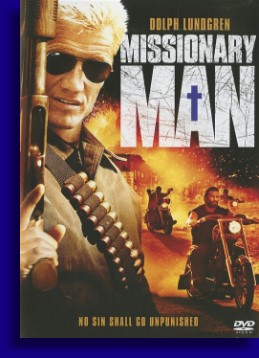

Reviewed by
Christopher Armstead



As we have established on this thing called Film Critics United, the Royal Court or Unholy Trinity of Direct-To-Video flicks are Snipes, Seagal and Van Damme. However on the outside looking in on this triumvirate is one Dolph Lundgren, who probably could kick all three of their asses, Dolph’s output is far too limited to be included with these three heavyweights, though his movies are certainly no worse. Dolph may also be the most creatively talented of the three in that he has sat behind the directors chair on a few occasions to pretty good effect, though we will try like hell to put the truly putrid ‘Diamond Dogs’ out of our collective memories, which apparently he attempted to save as director but couldn’t pull that disaster out of the toilet. Seagal tried directing with ‘On Deadly Ground’ and it’s one of his worst films, and that’s saying something. Van Damme tried directing with ‘The Quest’ and that IS his worst film. Wesley may not pay his taxes but he does have the good sense to stay in front of the camera, and we appreciate you for that Mr. Snipes. Dolph however can direct, though he might not be the next John Ford or whatnot, but he knows what his audience likes to see and he is skilled enough to deliver it. With ‘Missionary Man’ director Dolph gives his people exactly what they want.
…and death came riding on a pale horse… as it is said in Revelations. A stranger named Ryder, oddly enough (Lundgren), rides into a sleepy western town on his rusty motorcycle to attend the funeral his Native American buddy J.J, who has died in the most mysterious way. The large beaten and weathered blonde man stops in a pub, places his bible on the bar and downs a straight tequila. Outside Ryder is about to move along to the services but he observes some thugs beating up a drugged out Indian man in the street, asking him where the hell their money is. This doesn’t please Ryder who ends this nonsense in a most brutal and unsympathetic fashion.
At the funeral the spiritual Ryder says a few words from the Good Book and meets J.J’s family in his sister Nancy (Kateri Walker), her teenaged children Kiowa (Chelsea


Ricketts) and Junior (John D. Montoya), and his wise old Indian granddad White Deer (August Schellenberg) who speaks in riddles, and wise old Indian dudes tend to do in movies. At the wake he also makes the acquaintance of Reno (Matthew Tompkins) the bad man that runs this little town, and the person that this family thinks is responsible for J.J.’s untimely demise. But Reno is none too happy to see this trouble maker beating up his men and interrupting his big plans to put a casino in this lazy Indian town. He advises Ryder that it would be good for his health to go ahead and jump on his bike and make haste, but my man Ryder just don’t listen so good. Regardless, after a few unfortunate run-ins with The Quiet Man, Reno soon realizes that he and his men just can’t handle this cat and call for the ‘Real’ heavies from ‘up north’. Once Reno describes Ryder to Jafre (John Enos III), the leader of this brutally violent biker gang, he seems familiar to the man but Jafre knows full well it can’t be the same cat he’s thinking of because that dude is dead. Oh well. Maybe you should’ve checked his pulse because you have showdown at sunrise with this dude versus you and your thirty or so violent, raping, murderous bikers, and I’m not liking your chances.
One of the best things about Director Dolph is that he knows Actor Dolph better than anybody. Similar to his film ‘The Russian Specialist’ Lundgren keeps his stars dialog short and brief, his emotions low, his expressions few and his motivations singular of purpose. For the look and feel of his film Lundgren was going the way of the old style western which worked on some levels but not as well on others. The tome was true with the mysterious stranger with no name riding into the dusty town to help the helpless amidst the corrupt, and the final showdown was very well done and entertaining, if not somewhat one-sided. But with the look of his film Lundgren went with a washed out pallet, perhaps to simulate the look and feel of the films of the 40’s and 50’s but instead the colors of his film just looked dull and lifeless. Simply laying a sepia tone over an image doesn’t equate to a ‘western feel’ if the whole film isn’t staged and lit properly and this one didn’t seem to look all that good. Lundgren also paces his film very slowly, similar to the westerns of the time, punctuated with short violent outbursts. Though at times it might have felt a bit ‘too’ slow, this was still more effective as it added to the overall atmosphere of the movie and gave the scenes of violence more punch than a wall to wall action film would have done.
Dolph probably should have given John Enos III more to do because he made for one fine, very mean bad guy, and overall, including Dolph’s unemotional performance, the actors did fine work within the limitations of this story. And you gotta love Dolph’s last line in this flick as the big showdown was coming to a close.
‘Missionary Man’ might not be the penultimate modern western that it was shooting for, but it is better than average entertainment filled with violence, bloodshed, brutality and inhumanity. Perfect for an evening with the family. Keep up the good work Dolph Lundgren, you master auteur you.

